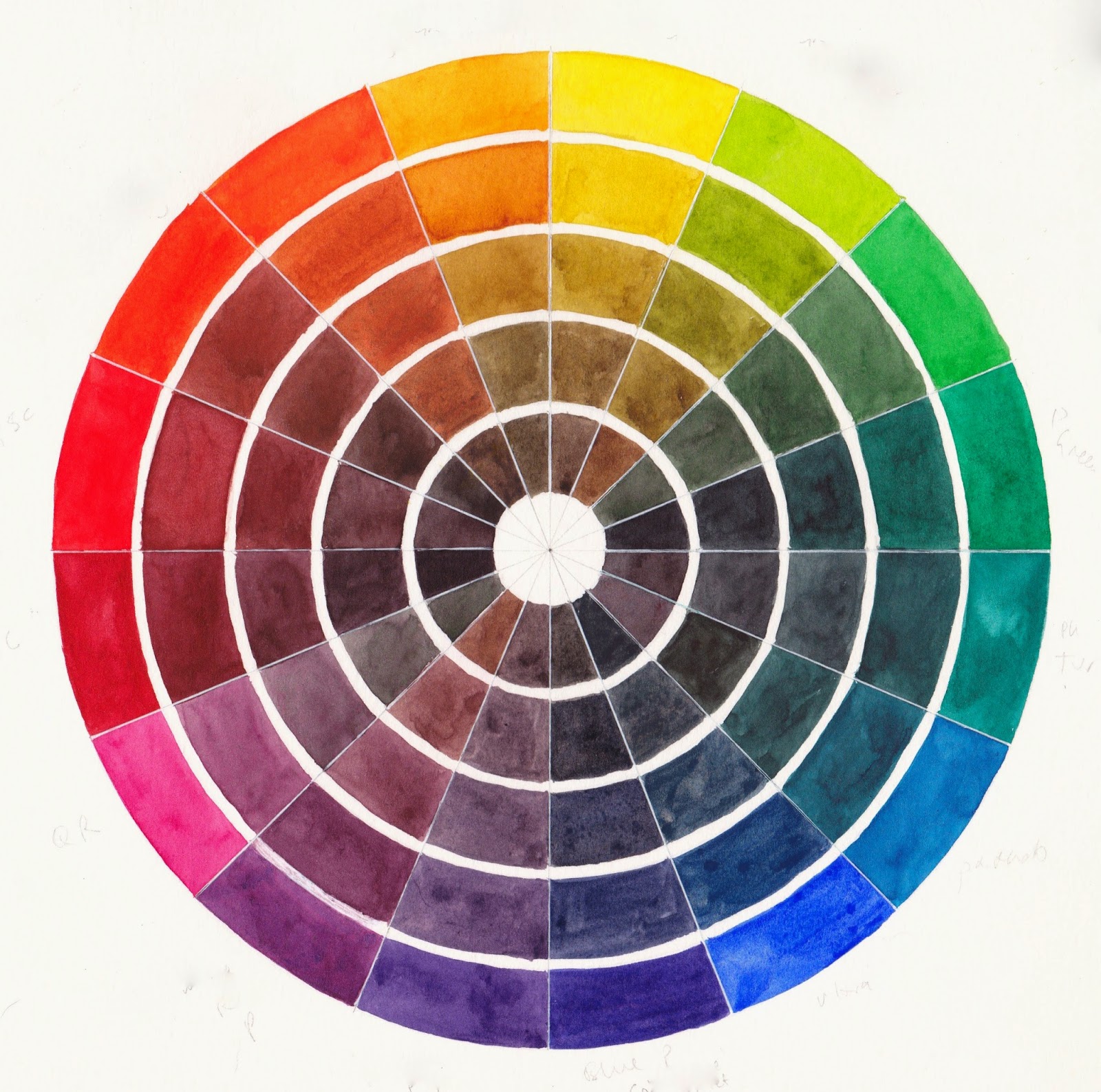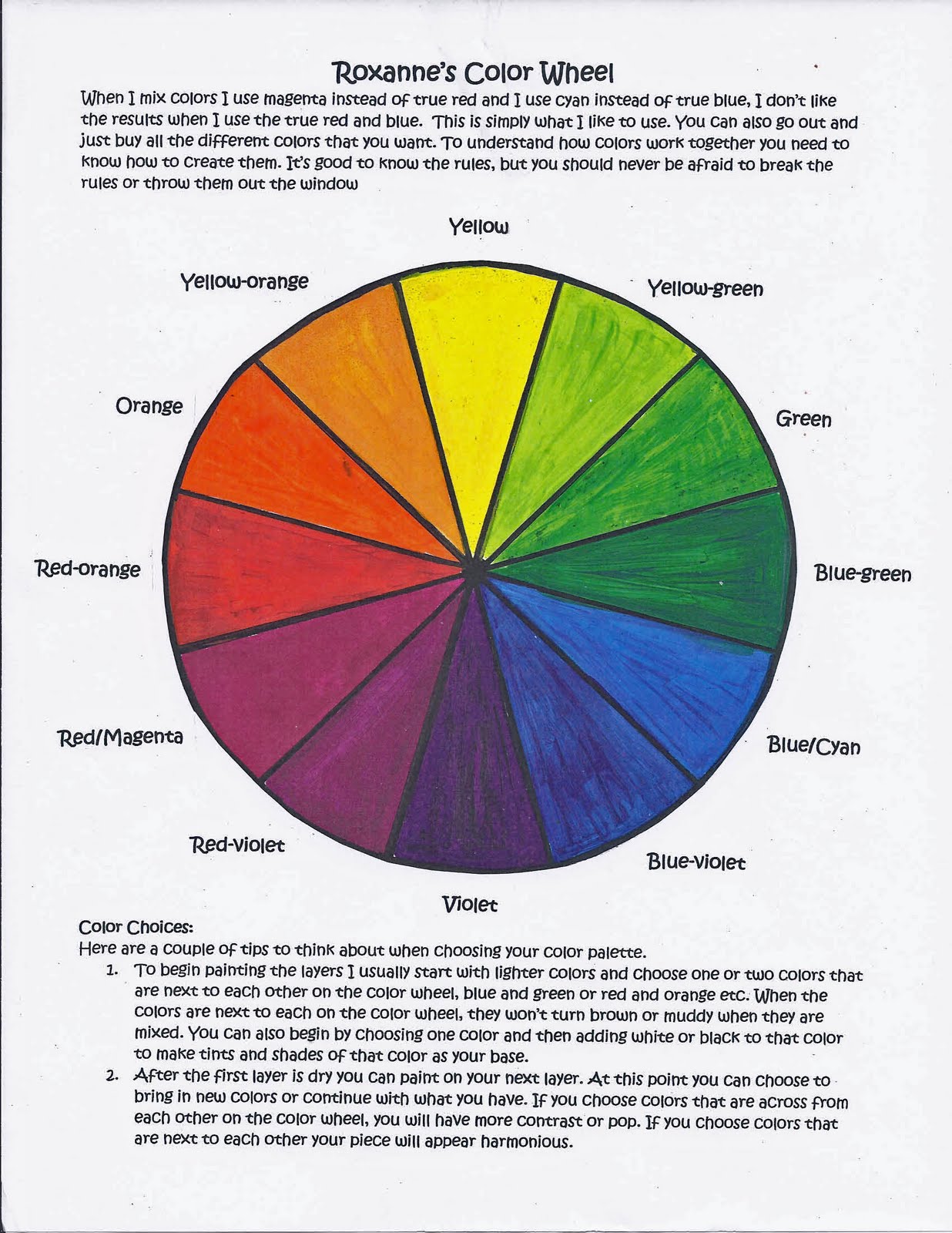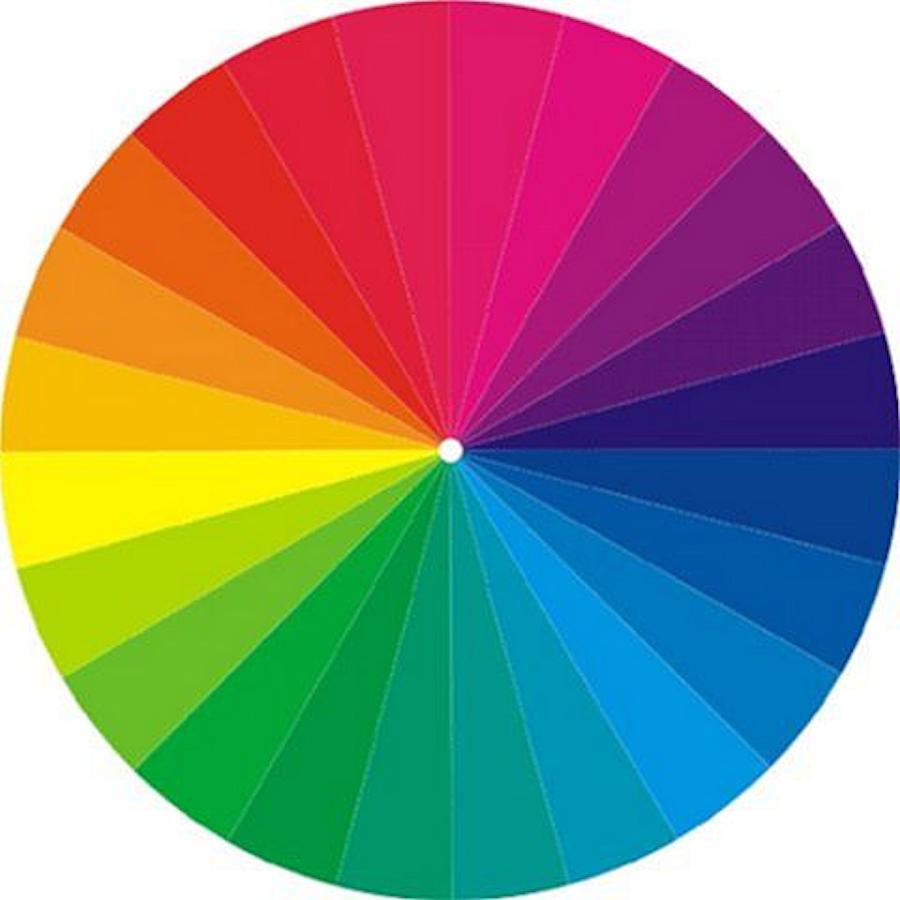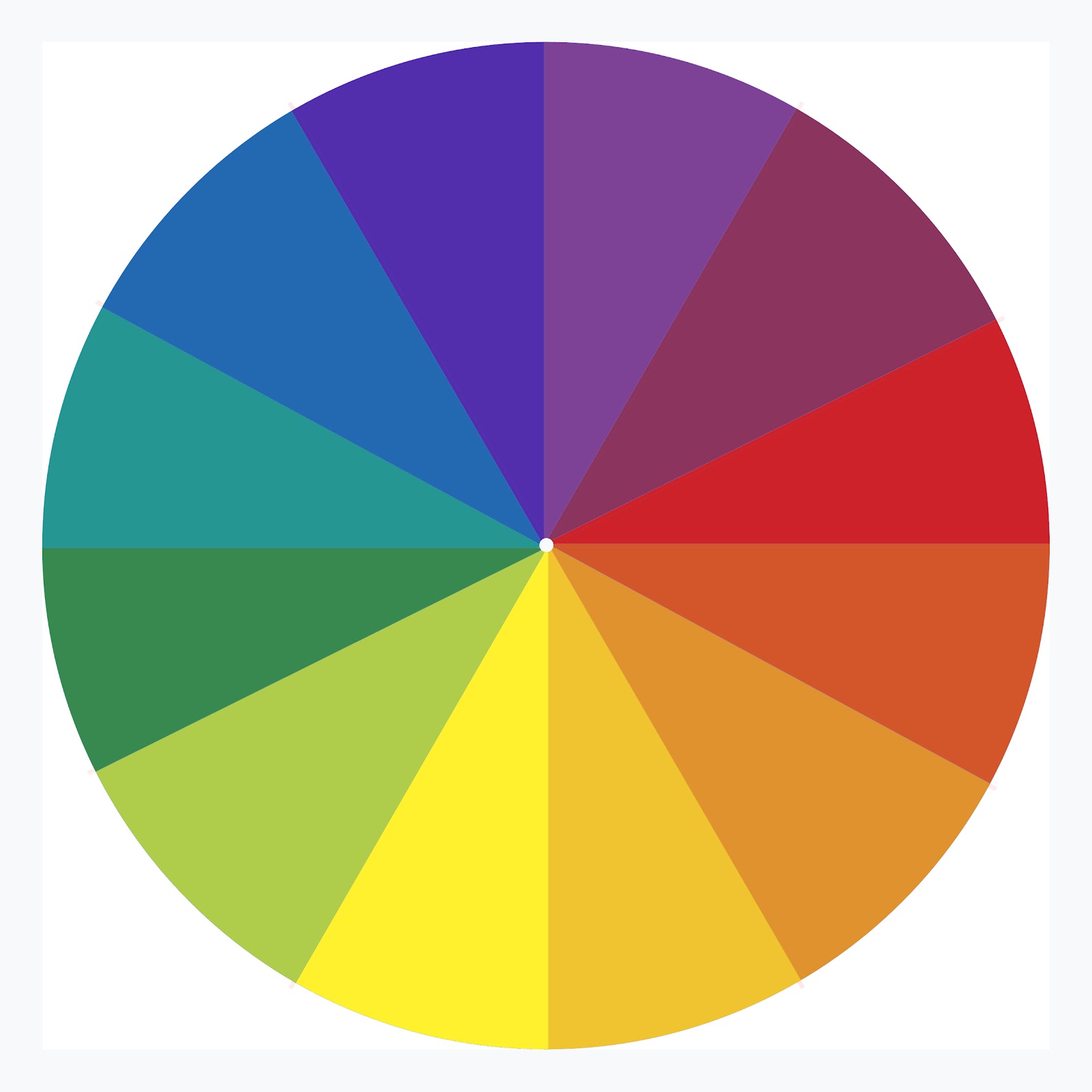
color wheel Color wheel lesson, Elements of art, Elementary art projects
Introducing the artist color wheel. Hand painted Color Wheel demonstration. The artist color wheel above shows 12 colors. Starting from the top going clockwise the colors are: red, red-orange, orange, yellow-orange, yellow, yellow-green, green-yellow, green, green-blue, blue, blue-purple, purple, and pink.

Jane Blundell Artist More Colour wheels and templates mixing opposites to create neutrals
Generate stunning palettes with Adobe's Color Wheel Use the Color Wheel to create harmonious colors that make a palette. Choose your base color, then select from a variety of color harmonies like analogous, triadic, complementary, and more to create beautiful designs.
Mrs Highsmith Loves Art Example of finished color wheel project
A color wheel for artists color wheel art is a visual representation of color and how these colors interact with each other. The basic color wheel usually contains your primary, secondary, tertiary, complementary colors, with various shades and tints. According to color theory, you should be able to determine what colors work best together by.

Blog not found Color wheel projects, Color wheel design, Art lessons
Color Theory is a way of thinking that helps artists and designers look at visual media (websites, advertisements, logos, artwork, etc.) to decide the best use of color to meet the individual project's goals. This way of thinking is based on psychology, the science of optics, and historical data.

Art House 577 My Color Wheel
Warm and Cold Colours. Looking at the colour wheel, we can divide it into two sections. The colours on either side are called warm an cold colours. See if you can determine which are cold colours and which are warm. Yup you guessed it - red, yellow, orange, maroon are warm colours and blue, green, violet and lime are cold colours.
PLATEAU ART STUDIO Color wheel
colour wheel, a diagram used in the visual arts to represent the colours of the visible spectrum and their relationships to one another. The colours are arranged systematically into a circle, with each hue usually falling into one of three categories: primary, secondary, or intermediate. In fields such as painting, fashion, film, and design.

Color Wheel Digital Art by TJ Art
So, that would be: Red + Blue = Purple. Blue + Yellow = Green. Yellow + Red = Orange. Tertiary colors are the colors you get when you mix a primary color with a secondary color. For example, if you mix the primary color yellow with the secondary color green you'll get the tertiary color of lime green.

Color Wheel Designs! Teaching COLOR, HUE, SHADE, TINT! Color Wheel Design, Symmetry Design, 2d
The colour wheel is a circular tool used in art and design. It shows the relationships between the primary colour hues of red, blue and yellow and the secondary and tertiary colours. It can also help you choose a colour palette when you're painting, or pick the correct colour to convey a certain mood. The colour wheel I painted in my sketchbook.

Kids Art Market Color Wheel Perspective
Moses Harris' Color Wheel. Moses Harris' color wheel was designed in 1766 and emphasizes the function of the primary colors from which mixed colors are created. In the center of the wheel, Harris documented his observation that mixing the three primary colors produces black. Today, this is known as subtractive color.

UAL Art Shop Videos Colour Wheel
A color wheel is a circle diagram that illustrates the relationships between different colors. Sir Isaac Newton developed the first color wheel in his 1704 book Opticks. Newton created an asymmetrical color wheel with seven colors—red, orange, yellow, green, blue, indigo, and violet. In 1810, Johann Wolfgang von Goethe developed a symmetrical.

Best Color Wheels for Artists and Educators
This pack of 10 blank color wheels is great for artists and students who are wanting to get hands-on and figure out their own charts without having to draw a bunch of charts first. Art gift alert! This little color wheel pendant veritably shimmers with beautiful colors. This is a beautiful 18th Century French Chromatic Color Wheel.
SINKING SPRINGS ART COMPLEMENTARY COLOR WHEELS 5th
Johannes Itten, a Swiss artist, and art theorist, was born in 1888 in Wachseldorn in the canton of Bern. He quickly devoted himself to color theory and developed the color wheel, which is still the basis of art instruction in most schools today. In the color wheel according to Itten, the colors are divided into. Primary colors; Secondary colors
Mrs. Art Teacher! complex color wheels
Add several layers of both colors, alternating between the two. Be sure to fill the colors in evenly. The smoother your color are, the better your color wheel will look. But be careful not to make them shiny. Use light, even pressure. Follow the same process to fill in your circles for orange and violet.

Colour wheel Color wheel design, Color wheel art projects, Color wheel art
Create Your Own Color Wheel. The best color wheel to use as a reference is one you have made yourself. Here is a simple process for making your own color wheel: Step 1: Draw an outline of a simple color wheel on a canvas board or some other surface. Step 2: Paint in the primary colors (red, blue, and yellow).

Kids Art Market Color Wheel Perspective
Color theory is a practical combination of art and science that's used to determine what colors look good together. The color wheel was invented in 1666 by Isaac Newton, who mapped the color spectrum onto a circle.. The color wheel can be divided into primary, secondary and tertiary colors. Primary colors in the RGB color wheel are the.
Mrs. Art Teacher! classic color wheels
A color wheel is an illustrative tool that allows users to discover the relationships of different colors to each other, as well as to identify the perfect color to use for anything from artistic creation to advertising or marketing outreach. The initial color wheel was actually developed by Sir Isaac Newton over four centuries ago, but modern.